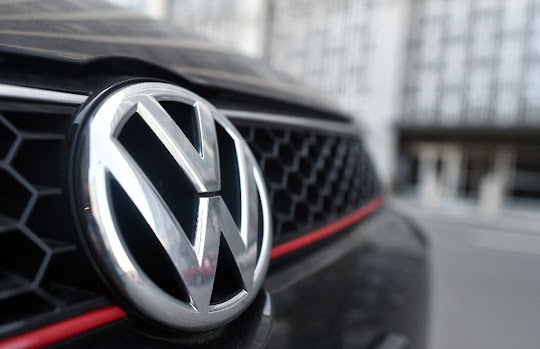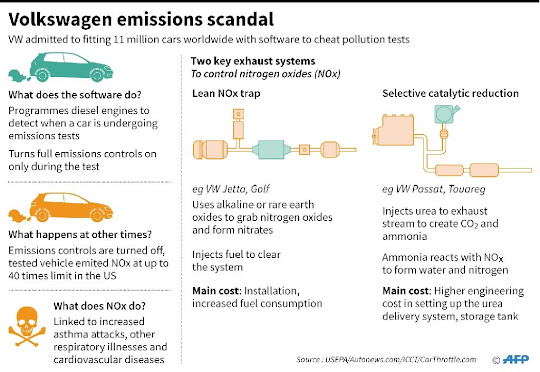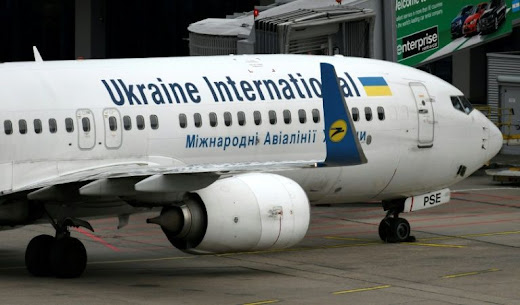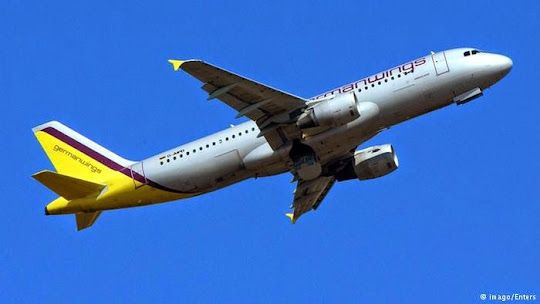Kompas, Sunday, 18 April 2010 | 08:47 WIB

A model leans on the side of a Dodge Challenger at the Lebanon Motor Show 2010 in Beirut on April 8. The show, which runs to April 18, is one of the years largest in the Middle East with some 400 models are on display, from cost-friendly Kias and Toyotas to ultimate luxury by Maserati and Bentley.
BERLIN, KOMPAS.com – Hydrogen, one of Earth's most abundant elements, once was seen as green energy's answer to the petroleum-driven car: easy to produce, available everywhere and nonpolluting when burned.
Hydrogen energy was defeated by a mountain of obstacles — the fear of explosion by the highly flammable gas, the difficulty of carrying the fuel in large, heavy tanks in the vehicle, and the lack of a refueling network. Automakers turned to biofuels, electricity or the gas-electric hybrid.

But hydrogen, it turns out, never was completely out of the race. Now Israeli scientists and entrepreneurs claim to have brought hydrogen energy a step closer by putting it in much smaller, lighter containers.
Rather than using metal or composite cylinders of compressed gas that look like bulky scuba gear, hydrogen is packed into glass filaments which, once out of the lab, will be only slightly thicker than a human hair.
These 370 glass capillaries are bundled into a glass tube called a capillary array, about the width of a drinking straw. The scientists say 11,000 such arrays will fuel a car for 400 kilometers (240 miles), take less than half the space and weight of tanks currently installed in the few hydrogen cars now available.
"We have shown new materials that can store more hydrogen than any other system," says Dan Eliezer, chief scientist of C.En Ltd., the company based in Geneva, Switzerland, where the Israelis are developing their invention.
The scientists make no attempt to improve the standard fuel cell, which is not much different today from when it was invented more than 150 years ago. A fuel cell makes electricity from chemical reactions involving hydrogen and oxygen, producing only water vapor as a byproduct. The fuel cell can be compared with a standard car's engine, while the capillary arrays would be comparable to the gasoline tank.
The system was unveiled in Berlin at a demonstration for The Associated Press at the German Federal Institute for Materials Research and Testing, known as BAM, which has been testing the materials since 2008 and has pronounced the system safe. Also attending was a representative of Italian-based Generali Insurance, which has invested $10 million in the project.
While its backers call the technology a breakthrough, it is unlikely to gain traction without a large injection of capital to scale up development. It also would need a distribution system and the support of major car companies, which have poured billions of dollars into their own closely guarded research programs.
Auto companies "are still investing significant amounts of money in hydrogen and fuel cells," and have hundreds of researchers working on the technology, said David Hart, director of E4tech, a business and energy consultancy in London. Automakers refuse to disclose details of their research or funding.
Hart said the glass capillaries appear to be an "interesting" technology that would be "very significant" if it were to provide the energy claimed by the company. But if it means creating a new refueling infrastructure, "it may still not be the right answer for cars," he said.
Like electric cars, the driving force behind hydrogen research is the need to break away from oil and rein in emissions of greenhouse gases blamed for climate change, especially carbon dioxide from industry and transport. Transportation adds about 13 percent of manmade carbon to the atmosphere.
Hydrogen boasts zero emissions. It can be produced from water through electrolysis, or harvested as the waste product of nuclear reactors and chemical plants.
"In terms of saving carbon dioxide, you do a great deal more with renewable hydrogen," said Danny Dicks, a biofuels expert from the British consultancy group Innovation Observatory. "So ultimately, hydrogen is where things ought to be driving toward."
Automakers, for now, still are focused on battery power. At the Geneva Motor Show last month, nearly all major manufacturers displayed their latest electric vehicles or plans to produce them. The few hydrogen vehicles on the floor attracted little attention.
It was not always that way.
U.S. President George W. Bush allocated $1.2 billion for hydrogen research and said in his 2003 State of the Union address: "The first car driven by a child born today could be powered by hydrogen and pollution free." The Obama administration largely scrapped the program.
In Europe, too, hydrogen is low-priority. The Dutch government, for example, recently announced a euro5 million ($6.75 million) subsidy for hydrogen, but gave eight times more for electric cars. Buyers of plug-ins get tax breaks and rebates, and cities like London and Amsterdam are planting charge-up pillars on their streets.
"Electricity is taking all the subsidy schemes. It's taking it away from hydrogen," said Robert van den Hoed of Ecofys, an independent Dutch consultancy on renewable energy.
The main reason is cost. Electric cars are road-ready and in production, while hydrogen vehicles are still experimental. Nissan's new electric car, the Leaf, will go on sale for about $25,000 in the United States, including a government rebate.
Honda has produced a roadworthy hydrogen vehicle, the FCX Clarity, but it is not for sale. Only 50 of them are available for lease in the United States at $600 per month; Honda says it intends to increase the fleet to 200 this year. Honda declines to put a sales tag on the Clarity, but some experts say the market price would be $1 million each. Toyota, a leader in electric car technology, plans to put its first hydrogen vehicle on the road in 2015.
In December, the German luxury carmaker BMW ended an experimental run of 100 hydrogen-fueled internal combustion engines and retreated back into the laboratory for more research. "We learned everything we wanted to learn from this huge field test," said spokesman Tobias Hahn, and BMW is now working on the next generation.
"We are still committed to hydrogen as the long-term alternative for switching to sustainable mobility," Hahn said, speaking from Munich, adding that the biggest problem is on-board storage.
Among U.S. carmakers, General Motors produced a test fleet of 100 Chevrolet Equinox fuel cell cars and let 5,000 people test them over a 25 month period. Like BMW, Chevrolet is withdrawing the vehicles to upgrade the technology.
A combination of plug-in electric and hydrogen may emerge as the most eco-friendly solution. "A fuel cell hybrid looks like a good long-term option," said Hart. "It's not an either-or. It's both, most likely."
Public transport also is experimenting with hydrogen. The Vancouver Winter Olympics deployed 20 fuel cell buses. The European Union and 31 industries teamed up to run a four-year trial of hydrogen buses on regular passenger routes in 10 cities ending last year, and a new generation of buses will begin operating later this year, said Frits van Drunen, who runs the project for the Dutch public transport network GVB.

"We predict that by 2017 these buses will be priced per kilometer at the same level as diesel buses," said van Drunen, interviewed at GVB's hydrogen refueling station in Amsterdam.
At BAM, the Berlin testing site, researchers guided a remote-controlled model truck around the laboratory floor powered by a fuel cell and three hydrogen-filled arrays bound together, about the thickness of a thumb. A similar device lit up a panel with 20 LED bulbs. The researchers say such devices can be built into power packs for laptop computers and even mobile phones.
BAM's research director, Kai Holtapples, said the C.En system can be on the road within two to five years if it can be developed as a replaceable rack that can be swapped at filling stations. Eventually, cars will be able to refuel with nozzles, like gas pumps today, he said. "Both systems will need some engineering, of course, but some ideas already exist."
BAM has no financial stake in the capillary array project, he said.
Moshe Stern, C.En's chief executive, said the electric car will dominate the market for years to come, but the cheap and unlimited supply of hydrogen will make it the power source of the future.
Within a few years, perhaps a decade, hydrogen fuel will shift the world's energy balance away from oil, he said.
"The real revolution is not the technical revolution, it is the political revolution," said Stern.
"We are Israelis. We know what it means to be blackmailed by oil," he said.
AFP
Related Article:
Hydrogen Production






















